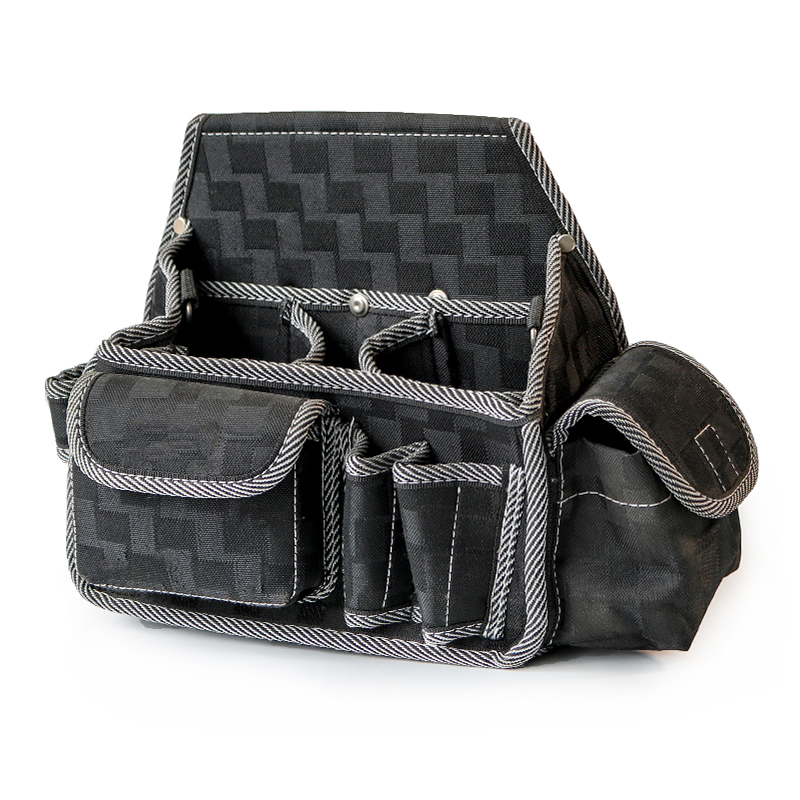Multipurpose Tool Pouch is a versatile carrying case designed to hold a variety of tools and accessories. It is typically made of durable materials such as nylon, canvas, or leather and is designed with several compartments and pockets to keep tools organized and easily accessible.
Multipurpose tool pouches are commonly used by tradespeople, DIY enthusiasts, and outdoor enthusiasts who need to carry a variety of tools and equipment with them. They can be worn on a belt or attached to a backpack or tool bag for easy transport.
Some common features of a multipurpose tool pouch include:
Multipurpose tool pouches come in a variety of sizes and styles to accommodate different types of tools and equipment. They can range from small, compact pouches designed to hold a few tools to larger, more expansive pouches designed to carry an entire toolkit.
Overall, a multipurpose tool pouch is a useful accessory for anyone who needs to carry tools and equipment on a regular basis. It allows for easy organization and quick access to tools, making it a valuable addition to any toolkit or gear collection.
Multipurpose Tool Pouch,Multi Functional Tool Kit,,Multi Function Backpack ZHANGJIAGANG CITY XIANGLE TOOL CO., LTD. , https://www.xiangletoolbag.com
In the indoor environment, large full-color electronic displays with an area of ​​more than 5m2 mainly include three options: ordinary rear projection, DLP (digital liquid crystal rear projection) and LED display.
The advantages of the rear-projection type display are small pixels and high definition. The disadvantages are low brightness, small viewing angle, and short lens lamp life (only a few thousand hours). The advantages of plasma splicing are also small pixels and high definition. The disadvantage is that there is a patchwork, and the smallest patch seam can reach 1mm at present. Rear projection and plasma displays are suitable for closer viewing. The advantage of LED display is high brightness, no seams, the disadvantage is that the pixel particles are coarser and have lower resolution. The current commercial full-color indoor LED display has the highest density of P4, which is 62500 pixels/meter2. The LED display is suitable for viewing indoor places that are far away.
The selection of indoor LED display key consideration should be the question <br> <br> use LED indoor display, the main consideration the following aspects.
1 real pixels and virtual pixels. As with outdoor full-color screens, the number of pixels in an indoor full-color screen is also divided into real pixels and virtual pixels.
2 die. As with outdoor full-color screens, it is generally recommended that the full-color blue and green tubes in the room use the cores of Shilan Mingxin, and the red tubes use the optical Lei or wafer die. High-grade products are recommended to use the cores of Japan Nichia and the United States CREE.
3 package form. Indoor full-color LED display LED surface form has a single lamp, sub-surface paste, three together a surface mount and three-in-one surface mount, etc., the appearance is not the same. The advantage of the surface mount package is its large viewing angle, good luminescence consistency, and easy automatic soldering process. It is the mainstream product of full-color LED screens, but now its price is relatively high; single lamp angles are relatively small, brightness is slightly higher, and prices are lower. The Asian surface sticker is actually a kind of single lamp. Single lamps and sub-surface stickers are relatively inexpensive and are transitional products.
4 density. Because indoor full-color LED chips generate more heat and control circuit density is higher, the dot density of commercial full-color screens cannot be made very high. There are mainly P5, P6, P7.62, P8, and P10. .
5 drive mode. Indoor full-color LED display driver is constant current drive, using dynamic scanning (mainly 1/4, 1/8, etc. scan mode). In the case of the same die, the 1/4-scan circuit has more light and higher brightness.

Large Hotel and Supermarket LED Display Selection Guide
At present, more and more LED displays enter the interior, especially large-scale hotels and large-scale supermarkets have also been favored by advertisers. What are the requirements for large-scale hotels to use indoor full-color screens?